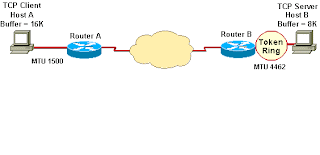virtual circuit connectivity verification
Virtual circuit Connection Verification (VCCV) : ================================================== VCCV provides connection verification services such as ping ,mpls ping regardless of underlying protocol such as MPLS ,IP tunnel. A network operator may use this to test the liveliness of the network. Ping and other IP messages are encapsulated using the PWE3 encapsulation .These messages are referred to as VCCV messages.VCCV messages are exchanged after negotiation between PEs. MPLS as PSN : ------------- VCCV creates control channel between PWE3 PES to exchange the IP monitoring tools. For more details of this , please refer PWE3 architecture.Packets sent across this channel are IP Packets ,allowing maximum flexibility. When control word is present on VC , it is possible to indicate the control channel by setting the control channel header . this is referred as inband MPLS VCCV as the control channel would be in band. When the control header is not in use , use of MPLS router alert la...

